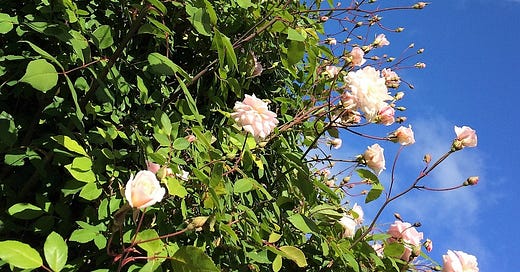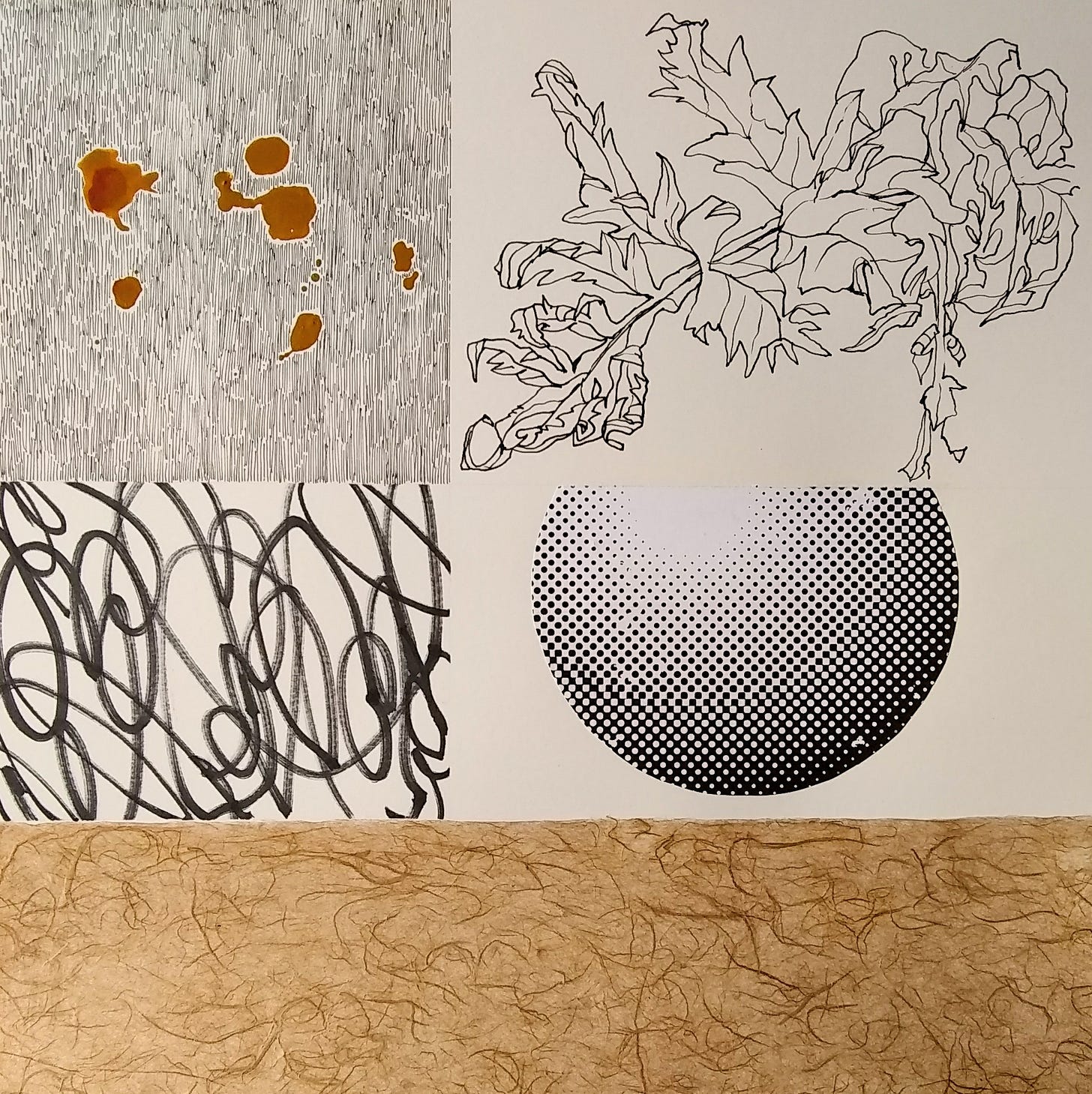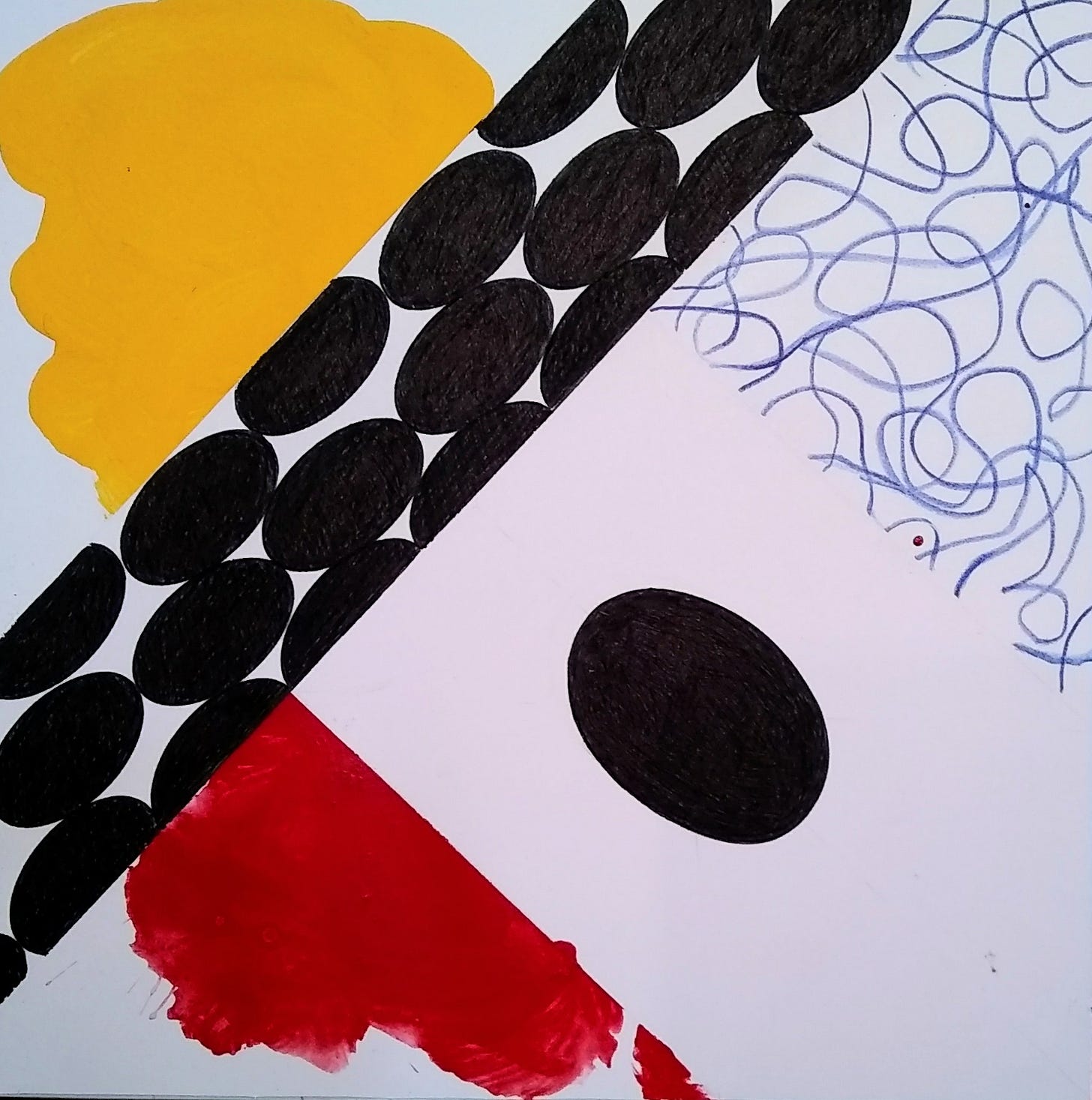INCIDENT REPORT
It’s summer (thinking of school terms). Here in this coastal town, that means two or three hours of bright sunlight in the morning followed by six or seven hours of overcast or fog.
The roses are blooming, and so are the aphids (I don’t disparage aphids; my childhood interest in ants and their “herding” tendencies always makes me think of aphids as teeny green cows). We look forward to the mid-summer flowering of sunchokes, and the autumn harvest of their small, delicious roots. Fire season in California is all year, but right now the sky is free of smoke and ash.
Recently, a racket caused by what I thought were “raccoons” turned out to be something different. I switched on the porch lights to scare the intruders away. Shortly thereafter, though, I heard people speaking outside the front windows, and saw the glimmer of a flashlight beam. It sounded official, like someone talking to a cop. I was tired; it was around 11 pm and I didn’t feel like going outside to check.
Somehow, I managed to drop off to sleep. Next morning, though, a concerned neighbor came by to “check on me,” and that’s when I found out that a stranger had been standing outside near his truck, on the other side of the fence (very close to the house), reportedly lobbing bricks at the cottage. I didn’t find any bricks and no damage was visible. But maybe that was because the landscaper had stopped by early in the morning and may have cleaned any mess up. Also, the guy’s truck was parked outside the cottage all night (I later found out—yikes) and he drove off in the morning, so he may have cleaned up the debris himself, covering his tracks.
I didn’t see this person in the act (and it has been surmised that he lives in the neighborhood). Because of all the “Asian hate” violence I’ve been hearing about (including from a couple friends who have experienced it) and seeing online, of course that’s the first thing I think about. I hope this wasn’t that. Maybe he was high or drunk; maybe he thought he was tossing rocks at raccoons; maybe he was hallucinating. I just don’t know what to make of it—and for now, I won’t.
ART
RANDOM/NOT RANDOM
I’ve decided not to use “random” in describing the art I’ve been doing lately, because whether I’m “blindly” picking out words from the dictionary or a poetry book, I can’t rule out some predictableness of outcome. If (in the “keyword” series) I pick the third noun that my finger lands on (without looking) in a poetry book, for example, the term chosen will always add some poetic/cultural gloss to the resulting art that’s related to the theme of the book, and for which I can’t rule out some hidden intention or bias. If I flip the pages of an English dictionary and pick the first word my finger lands on, the range of outcomes will be much wider, but it’s still predictably in English, with all the cultural/political baggage that entails. Still, whether the word is “elite” or “gross” (see the art below), whatever, the process rendered into art seems to equalize the cultural weight of each term—but I could tweak that, if want to.
“Random” more closely describes the feelings I have when doing such art—which are maybe a healthy sense of dread and a pleasant sense of surprise. The surprise comes more from the letters that make up the word I pick, because the 24 letters of the English language (or the 28 letters in the Pilipino alphabet) tell me what basic elements I will use to make the art, e.g., line, shape, color, etc. How that plays out on the paper or canvas is always something that seems unpredictable until it’s done.
Why even do this? There are probably many answers. But one answer is that it hacks my tendency to both overthink and overdo, which happens a lot, and which has ruined many pieces. So in this way I set parameters as a kind of check on that habit. Each choice results in a variety of letters and many combinations (visual elements). It’s like tossing coins for an I-Ching reading.* Somehow, it’s a surprise for me every damned time. So, I don’t pretend that any of this is “random”; expect all kinds of ulterior motives.
* However, this reminds me of the time, decades ago, when I was learning the I-Ching using the traditional 50 yarrow stalks. Just for the hell of it, I asked the anthropomorphized I-Ching what it thought of me doing this (the oracle is often visualized as a wise but grumpy old guy). To my consternation, I got “Youthful Folly” six times in a row.
FIVE
1. Gina Apostol, author of the novel Insurrecto, in this interview talks about using “arbitrary constraints” such as Oulipo in her writing. Interviewer Laurel Flores Fantauzzo and Apostol discuss the novel’s structural multiplicity, and this statement from Apostol strikes home: “Insurrecto’s structure rests on trauma, which has a kind of infinity — so the weave, the structure came from its subject — the endlessness of grief, the repeating spiral of it.”
2. “Dada: Chance and Randomness in Art” by artist/videographer Byron Caplan:
While you’re at it, check out Caplan’s website. Ever since a disturbing encounter he had with British military he’s been interested in camouflage, “not [as] an attempt to hide or blend in; rather, it is an attempt to confuse, obfuscate and transform. I find that my forms take on an anamorphic quality which seems to give each object a personality and life force. It is something completely surprising and wholly delightful to me” (Caplan, website).
3. I continue to learn about mancala/sungka/congkak games. The cultural aspects fascinate me perhaps more than the game play. There’s even a horror movie about the game, directed by Ahmad Idham. The full movie version of Congkak, the Malaysian horror film (2008), can be easily found on YouTube if you want to see it. Here is the trailer:
4. “The Machine is Dreaming,” says artist Refik Anadol in “How This Guy Uses A.I. to Create Art” (in WIRED). He uses A.I. to create “data sculpture” as large-scale, immersive public art. The art would certainly be astounding to view. But I’m still trying to figure out how I feel about it:
5. The Tulsa Massacre has been in the news a lot lately. PBS did a documentary on how the Greenwood Art Project is retelling the story of that event: https://www.pbs.org/newshour/show/how-art-is-retelling-powerful-stories-of-tulsa-massacre-capturing-communitys-hopes
See you next week. I hope your summer season is off to a good start.
Do share if you like this newsletter
Subscribe if you haven’t—it’s free!
My website: jeanvengua.com






